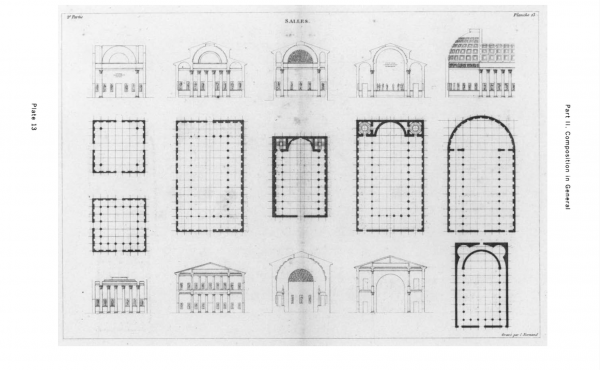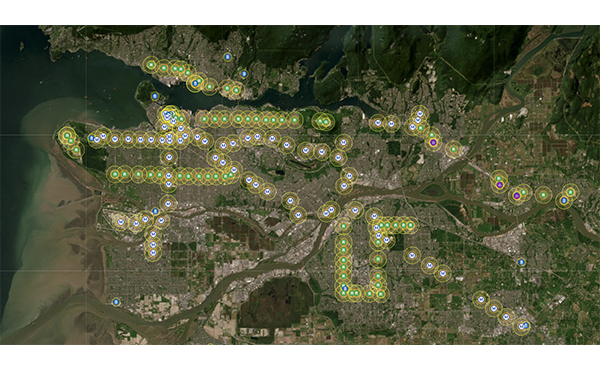By Ann Forsyth and Laura R. Musacchio (Wiley, 2005)
Small parks play a pivotal role in North American cities by being the main open space for most neighbourhoods. As such they often are arguably the most significant social space within the urban landscape, over and above providing a soft, natural terrain for people to interact with on a daily basis.
Yet, despite their intimate importance to the lives of everyday citizen, their limited size – and often fragmented distribution – puts small parks at the bottom of the open space priority list, behind larger regional parks and conservation areas whose ecological and social merits are clearly understood and respected. This bias is based on the assumption that the tight boundaries of small parks don’t allow for a variety of activities or allow them to be truly integrated into a more meaningful ecological strategy. At the end of the day, nothing could be further from the truth and this is clearly demonstrated in Ann Forsyth and Laura Musacchio’s Designing Small Parks: A Manual for Addressing Social and Ecological Concerns.
This a book that continues Wiley’s well-known tradition of providing practitioners and students with a solid, practical guide to the built environment. The book is clearly organized into four large sections – Overview of Park Planning and Design Concerns, Design Examples, Design Development Guidelines and Design Development Issue in Brief – each of which is broken up into subsections. Also worth mentioning is the overall design of the book, that uses smart graphic conventions – such as the repetitive header that clearly highlights the sub-section one is reading – to facilitate referencing the topics discussed. This particularly important for those who quickly want refer to back to an topic while reading the book or after one is done with it.
Without any hesitation, the books first section delves into the significant matters pertaining to small park design. The Overview of Park Planning and Design Concerns revolves around twelve topics – Size, Shape and Number, Connections and Edges, Appearance and Other Sensory Issues, Naturalness, Water, Plants, Wildlife, Climate and Air, Activities and Groups, Safety, Management, and Public Involvement. Each is structured in a similar way – starting with a summary of issues pertaining to theme in question followed by a succinct background and specific design guidelines. They end with “Fine-Print Facts” that highlights important research that is too detailed to put into the body of the subsection.
Each topics is also accompanied by a number of illustrations with longer-than-standard captions that allow readers to pick up the main points within the body through looking at the images. Again, an excellent inclusion that makes gleaning lessons and referencing the content post-reading incredibly easy. Small informative call-outs also add to the richness of the information provided.
As is explicit in the section title, the Design Examples focuses on five Minnesota-based prototype parks – Eagle Valley Park (Woodbury, MN), Parque Castillo (St. Paul, MN), Tighe-Schmitz Park (Birchwood Village, MN), Central Square (Chaska, MN), and The Andrew-Riverside Temporary Park (Minneapolis, MN) – each site of which was chosen to represent a variety of types and conditions. Although each example responds directly to local conditions, their inclusion in the book serves to highlight the underlying, more broadly applicable priorities of the designers and how these were manifested. Towards this end, each example succinctly highlights the core ecological and social issues for each project and then describes the social and ecological design strategies employed – individually, and then together. An interesting and informative approach.
The park prototypes were the testing ground for the guidelines described in the following chapter. These recommendations are directly related back to the twelve topics of the first section and wisely follow the sequence in which they were originally discussed.
The final section – Design Development Issues in Brief – are two-page handouts that condense and summarize the material covered in both the discussion of the twelve topics as well as the design-example sections of the book. Key references are also cited. As explicitly stated within, the intention of the section is to provide information sheets that can be copied and distributed as one sees fit. This is wonderful inclusion, particularly for those in who frequently partake in workshops or public event as well as those who are teaching students on the subject…not to mention those who don’t have the time to read the entire book!
Overall, Designing Small Parks is an excellent, well-structured read on an extremely important topic. One that fills in the voids left by our common prejudice towards larger open spaces and engages the design of small parks in a methodical way. I highly recommend the book to architects, urban planners, park designers, design students and citizen groups who want to understand the potential of small neighbourhoods parks. A great addition to ones reference library.
***
For more information on the book, visit the Wiley website.
**
Erick Villagomez is one of the Chief Editor at Spacing Vancouver. He is also an educator, independent researcher and designer with academic and professional interests in the human settlements at all scales. His private practice – Metis Design|Build – is an innovative practice dedicated to a collaborative and ecologically responsible approach to the design and construction of places.





